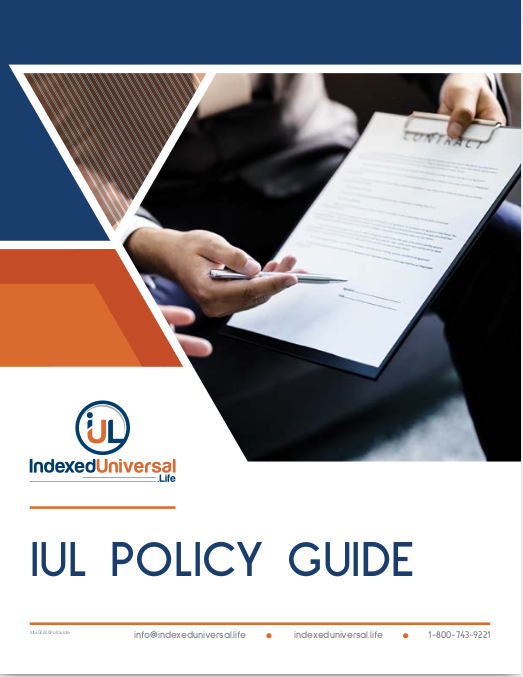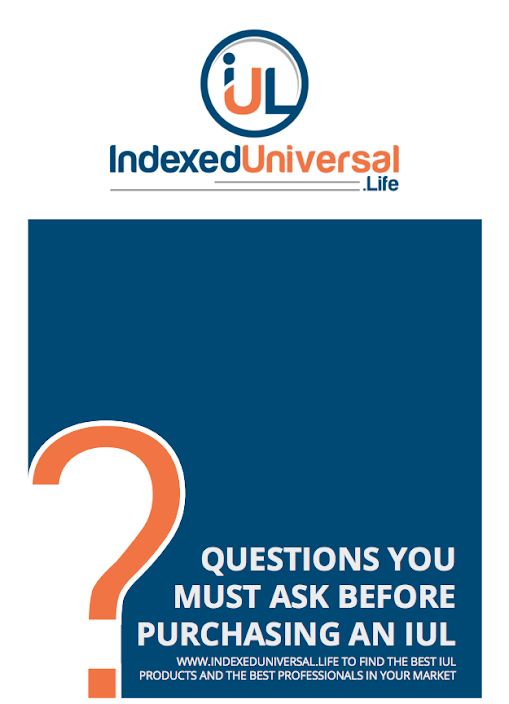IUL Insurance Crediting Rates
What are IUL Crediting Rates?
Indexed Universal Life Insurance (IUL) crediting rates refer to the amount credited to an index segment. The index credit will be calculated, and in turn, added to the policy’s cash value account at the end of an index period. (This is oftentimes on the calendar year anniversary of the policy).
Indexed universal life insurance can accumulate cash value based on the changes in an underlying market index (or even in more than one index), such as the Dow Jones Industrial Average (DJIA) or the S&P 500.
IUL crediting rates provide IUL policies the opportunity for greater cash value accumulation compared to other insurance contracts. Also, the built-in annual “floor” helps to ensure that the cash value will not decrease due to market loss – even if the underlying index suffers an annual loss.

Is IUL The Right Choice For You?
How Interest is Credited to an IUL Policy
When you initially open your Indexed Universal Life insurance policy, your premium – minus insurance charges – is allocated to the index allocation(s) that you choose. The performance of your index(es) is then tracked to calculate the indexed interest using the crediting method that you have chosen. If there is any during a given period, this credited indexed interest is added to your policy’s cash value.
Then, the value at the end of a period will be the new beginning value at the start of the next. Each year’s new start value is the annual “reset,” whereby each year’s credited interest is locked in on the index crediting date, and a new starting point is determined.
The interest credited to your IUL policy’s cash value cannot be taken away – even if the underlying index(es) performs negatively in the future. Therefore, your cash value in an IUL policy has the benefit of continuing to compound in future years without having to make up for any prior losses.
There are several different types of interest crediting methods that you may choose from (based on the insurance company and the policy itself). These will typically include:
- Point-to-Point
- Monthly Sum
- Monthly Average
Many insurance companies that offer IUL policies may credit the cash value return by using the point-to-point method. When doing so, the underlying market index at the end of each year will be compared to the value at the beginning of the given period. In this case, the underlying index(es) value at the beginning of that period is compared to the value at the end. Then, when the underlying index(es) is up, interest will be credited to the policy’s cash value, up to the stated cap rate.
The monthly sum crediting method takes the percentage of the underlying index(es) increase or decrease each month and then sums them up. From one month to another, the index(es) may go up or down. Should the overall percentages in the contract year be positive, the interest will be credited to the cash value.
Using the monthly average crediting method, the value of the index(es) at the end of every month will be averaged. This can be as simple as summing up all end-of-the-month values and dividing the total by twelve.
With any of the IUL crediting methods, if the return ends up in the negative territory, your IUL policy will not lose value. Instead, it will typically be credited with a 0% return for that period – which can allow your principal to be protected over time, regardless of what occurs in the market overall.
The crediting rate options and indexes your IUL offers can significantly impact how well your product performs. You should consistently review the performance of your IUL product and compare its actual growth against the IUL illustration you were presented with when you purchased the product. Ignoring the opportunity to adjust your crediting options will have an impact on your performance in the future. Working with a highly-rated IUL expert can make all the difference.
Search The Best-Rated IUL Experts. Seek Out The Best Advice.
IUL is a Great Potential Solution - The Best Results Require
The Best Advice.

Complete the
Information to
download
We respect your privacy and will never SPAM you.
Thank You! Your eBook has
been emailed to you.
To get the most out of the resources available to you, please enter your Zip Code and connect with the highest-rated IUL Experts. The Best Advice Creates The Best Results.
Thank You for your interest
in our content!
To get the most out of the resources available to you, please enter your Zipcode and connect with the highest-rated IUL Experts. The Best Advice Creates The Best Results.

